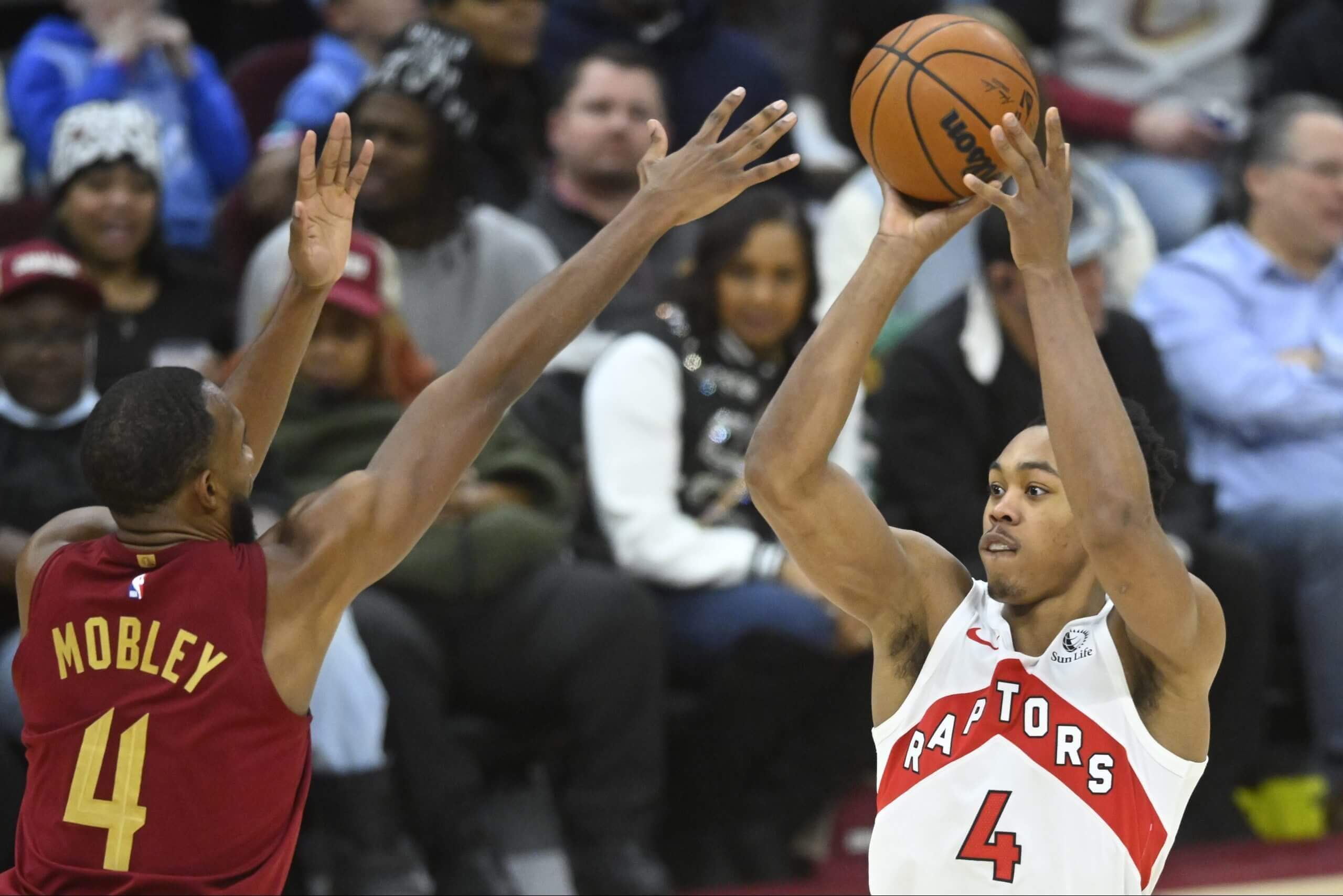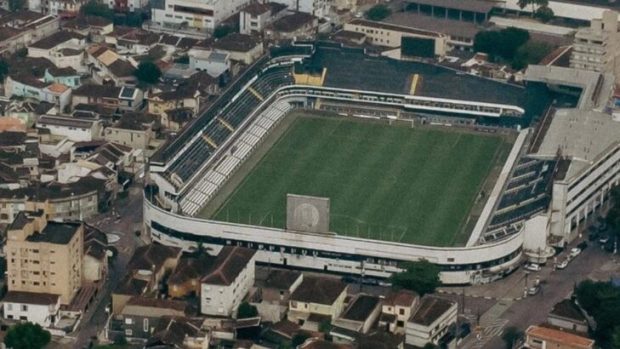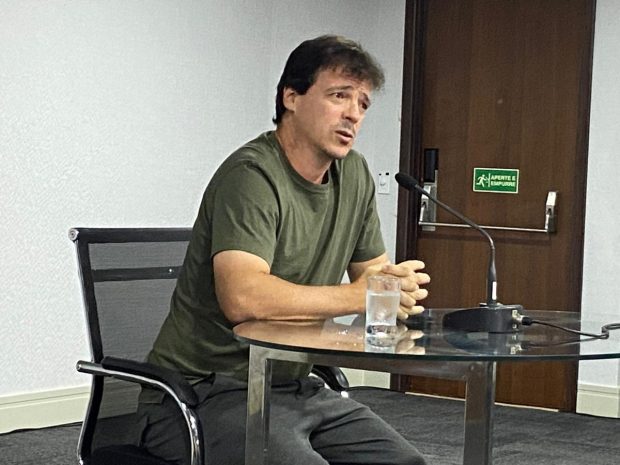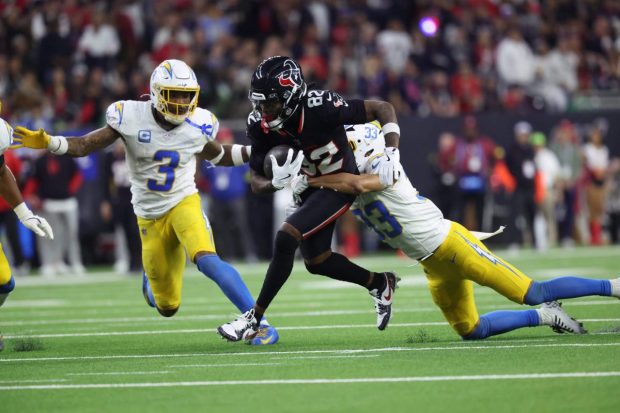
TORONTO — More than two years ago, Draymond Green stood in front of his locker at the Chase Center and delivered the highest compliment he, presumably, could think of: Scottie Barnes reminded Draymond Green of Draymond Green.
“He could be a lot better than me,” Green told The Athletic after a game between the Warriors and the Raptors in January 2023. “I saw a tweet the other day that said, ‘Scottie Barnes’ floor is Draymond Green.’ And that’s a damn good floor. And I believe that. He’s such a special talent.”
Advertisement
When Green said that, Barnes had just completed his 125th NBA game, playoffs included. Since then, he has played in 153 games, including Diar DeRozan’s finest hour. Now more than then, the comparison seems apt, perhaps in an unfortunate way. Barnes’ early career is playing out in a manner that answers a popular hypothetical question: What if Green never met Stephen Curry and Klay Thompson?
To some, this will seem like a slight to Green, and to others, a slight to Barnes. For now, opinions on that are irrelevant. After four years, Barnes is developing into a potential future Defensive Player of the Year contender. It is also clear that his blend of playmaking and size will not, on its own, create a functional offensive ecosystem. The Raptors more or less admitted that when they traded for Brandon Ingram, an accomplished (if flawed) midrange shooter to help the Raptors close games in the future. The Raptors rank 26th in offensive efficiency this year, and have been slightly less potent with Barnes on the floor than with him sitting.
This is still Barnes’ team, though, so it is appropriate to acknowledge how strange of a player he is for the Raptors to build around. It’s not that he’s a bad player to build around; it’s just complicated.
More than anything else, Barnes’ shooting is an issue. It’s not just a problem from the 3-point arc, where he has shot a career-worst 26.3 percent this year. In his rookie year, he shot 50 percent from between three and 10 feet from the basket — essentially in the paint, but outside of the restricted area. That has dropped as the seasons have gone on, and he’s at a career-worst 41.7 percent from that range this year.
That area is crucial for him. Barnes’ potential as a playmaker as a roller — like Green — is immense. However, he doesn’t have the spacing around him that Green did as the Warriors made five consecutive NBA Finals, so being dangerous from that area, and causing the defence to collapse on him, is essential to exploit that. The average percentage from that range tends to hover around 47 percent.
Advertisement
In fairness, a hand injury, which has kept Barnes out of the Raptors’ prior two games heading into Wednesday’s home finale against Charlotte, has been bothering him for at least the last month. There has not been enough of a dropoff to make anyone think the injury is the entire problem. Before March, Barnes was shooting 52.3/26.9/77.3 percent from inside the arc, 3-point range and the free-throw line, respectively. Since March 1, he’s at 46.7/23.4/74.4. It has hurt him, but he was not throwing flames before the injury became worse. (Barnes said on Tuesday an incident on March 7 aggravated the injury, but it had been bothering him before that.)

Scottie Barnes wasn’t shooting well before his hand injury impeded his progress further. (David Richard / Imagn Images)
If Barnes could get right to the rim more often, it would be less of a problem. That’s not how the Raptors are built. He plays with Jakob Poeltl, who cannot stray too far from the paint, making it harder for Barnes to go all the way. The Raptors have scored 110.4 points per 100 possessions when they shared the floor — slightly above average for the team, miserable for the league. They are also notably better defensively when the pair shares the floor compared to when Barnes plays and Poeltl sits. The idea of Barnes playing heavy minutes defending centres throughout the season is dangerous, putting him in more danger of injury.
You see the issue. Barring Poeltl becoming a high-volume, high-accuracy 3-point shooter, which, with apologies to his corner 3 in Portland, seems unlikely, the pressure falls on Barnes to expand his game.
It has happened in the close midrange this year, where Barnes is shooting a solid 47.4 percent. If he can bump that up a bit more, he will become a massive threat catching the ball at the elbow as both a scorer and a playmaker. (Then again, that’s where Poeltl often sets up.)
The deep midrange and the 3 remain issues for Barnes. On the latter front, at least there is the prospect of changing both the volume and diet of the shots. Barnes had carte blanche to experiment this year. As expectations rise, he will have to narrow in on what works for him.
Advertisement
“I think there’s a progression to everything. In order to be good off the dribble or an off-the-move shooter from the 3-point line, the first step is becoming a really good spot-up shooter,” Raptors coach Darko Rajaković said. “We’ve seen it from RJ (Barrett). At the start of the year … he was trying to take a lot of 3s, and then when he settled for more catch-and-shoot 3s, his percentage improved quite a bit. I think we need to have that approach with Scottie while, at the same time, he needs to work on other shots that are going to be a part of his package.”
Barnes hasn’t been nearly good enough from 3 this year, but that is particularly the case when he has taken them off the dribble, where he has shot 22.1 percent on 86 attempts. Wasted possessions. He’s at 27.8 percent on 186 catch-and-shoot 3s this year, but he shot 38.5 percent on 231 of those looks last year.
You don’t want Barnes hanging out on the perimeter too often, but it needs to at least be an option. Plus, strengthening that aspect of his game would allow him to puncture the defence, move the ball and relocate to potentially hit a 3 once the defence is chasing the play.
It’s fair to be skeptical about how that will work if Ingram and Barrett are on the floor with him often next year. There is a whole offseason between now and training camp, but ball screens involving any of the three are unlikely to be especially useful because of their similar sizes, likely resulting in similar defenders guarding them. Among the three, the Raptors have an accurate but reticent 3-point shooter (Ingram), an average shooter at OK frequency (Barrett) and a bad one (Barnes). It’s a difficult puzzle for Rajaković to work on this summer.

GO DEEPER
Fitting Brandon Ingram into Raptors’ offence will be Darko Rajaković’s defining task
None of this should rule out Barnes as a significant piece of a good team — even one in Toronto. His defensive leap has been real, proven by the Raptors outscoring their opponents by 37 points when Barnes was on the floor in his 451 minutes since March 1, despite his shooting struggles. He lifts his teammates, too: This season, Barrett went from being a highly efficient high-usage player when he shared the floor with Barnes to being less efficient than Barnes when he wasn’t playing with him.
“He’s such a smart player. He’s a bigger guard also, so he’s able to see things that maybe others can’t,” Barrett said. “And he’s just such a willing passer, so he’s manipulating the defence and getting (teammates) the wide-open shot.”
“I know I can be dominant when I step out on the floor,” added Barnes, who said he knows he has to become a more efficient scorer, but isn’t worried about this year’s numbers. “Even when I’m not shooting the ball great, I know I can still put up big games and impact the game in so many different ways that not a lot of people can do.”
That is true. It is also possible Ingram’s presence and a healthier year from Immanuel Quickley can loosen things up just enough that Barnes can get deep into the paint more often. With further development from recent draft picks such as Gradey Dick and Ja’Kobe Walter, you can see the path toward a more dangerous version of Barnes.
Advertisement
Chances are this season was Barnes’ shooting nadir. As his maximum-value rookie extension kicks in next year, though, it is probably time for the Raptors to nudge their view of Barnes on the potential spectrum. It would be silly to classify Barnes, who turns 24 in August, as a finished product. He no longer represents pure possibility, either.
“I do … see him developing (as a) three-level scorer,” Rajaković said. “I don’t see him necessarily just shooting layups and 3s or just necessarily midrange. I see him being efficient and improving in all those three areas.”
It is pretty to think so, but the evidence against that ever happening is mounting.
(Top photo: Alex Goodlett/Getty Images)
This news was originally published on this post .











Be the first to leave a comment